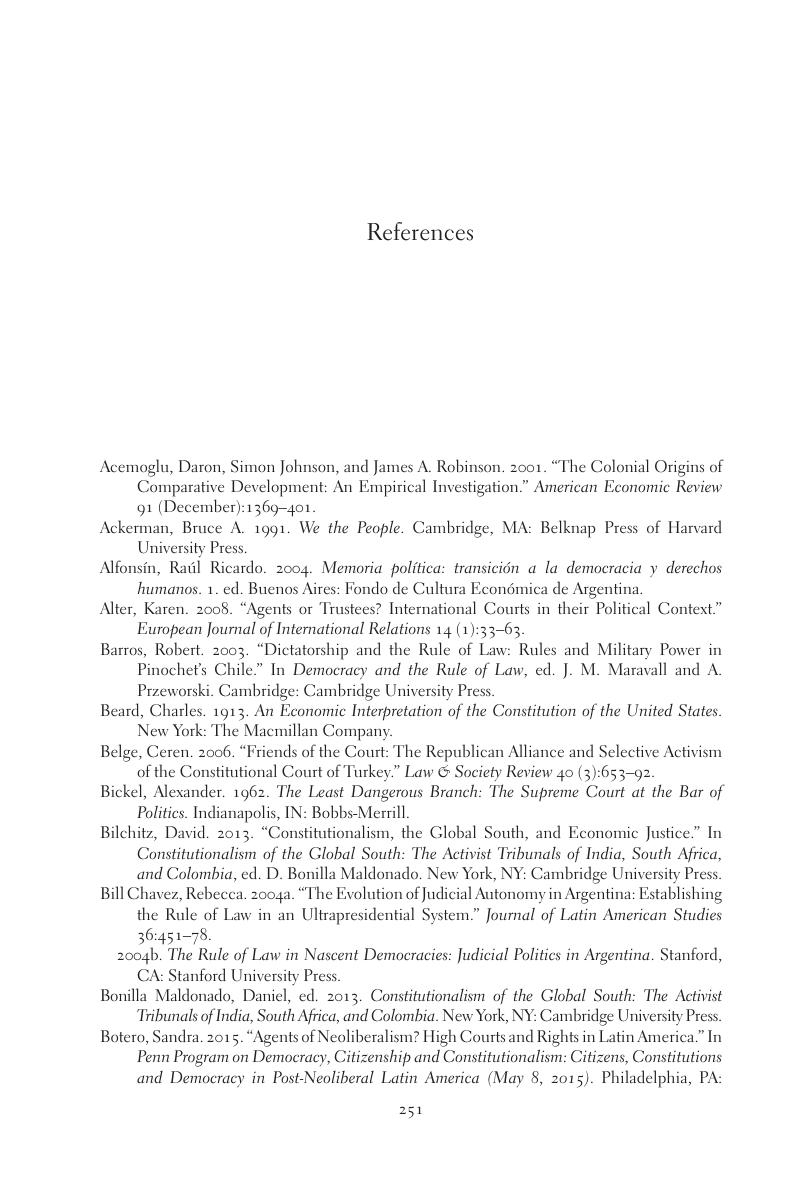Book contents
- The DNA of Constitutional Justice in Latin America
- Comparative Constitutional Law and Policy
- The DNA of Constitutional Justice in Latin America
- Copyright page
- Contents
- Figures
- Tables
- Acknowledgments
- 1 Constitutional Justice in the Americas at the Turn of the Millennium
- 2 Judicial Power and the Design of Constitutional Justice
- 3 Constitutional Governance and the Politics of Judicial Design
- 4 Identifying the Political Origins of Constitutional Justice through Quantitative Analysis
- 5 Guatemala (1985)
- 6 Argentina (1994)
- 7 Bolivia (2009)
- 8 Conclusion
- Appendix A Judicial Power: Concepts and Measures
- References
- Index
- References
References
Published online by Cambridge University Press: 19 April 2018
- The DNA of Constitutional Justice in Latin America
- Comparative Constitutional Law and Policy
- The DNA of Constitutional Justice in Latin America
- Copyright page
- Contents
- Figures
- Tables
- Acknowledgments
- 1 Constitutional Justice in the Americas at the Turn of the Millennium
- 2 Judicial Power and the Design of Constitutional Justice
- 3 Constitutional Governance and the Politics of Judicial Design
- 4 Identifying the Political Origins of Constitutional Justice through Quantitative Analysis
- 5 Guatemala (1985)
- 6 Argentina (1994)
- 7 Bolivia (2009)
- 8 Conclusion
- Appendix A Judicial Power: Concepts and Measures
- References
- Index
- References
Summary

- Type
- Chapter
- Information
- The DNA of Constitutional Justice in Latin AmericaPolitics, Governance, and Judicial Design, pp. 251 - 260Publisher: Cambridge University PressPrint publication year: 2018



